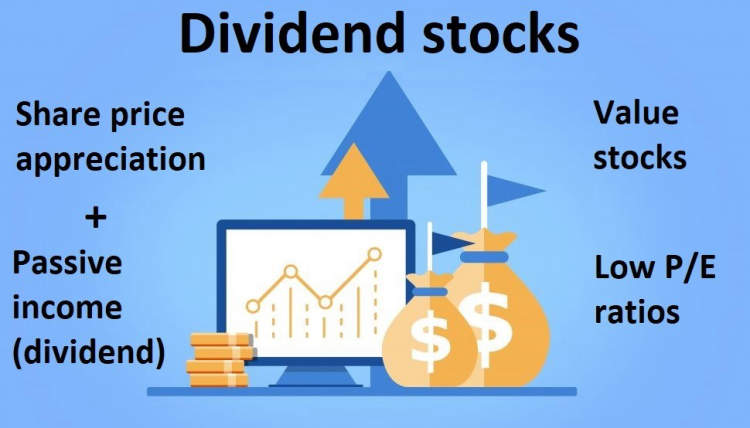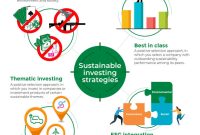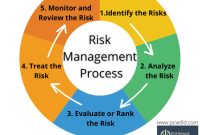Understanding dividend stocks can offer valuable insight into finding meaningful income for the long term. Dividend stocks are stocks which are issued by a company to investors as payment for investment. These stocks can be extremely valuable for those investors who are looking for regular, steady income and capital growth.
In this article, we explore the benefits of dividend stocks for a regular income. We look at the different types of dividend stocks, the yields they offer, and how they can be used as part of an income portfolio. Finally, we also discuss the risks associated with investing in dividend stocks, in order to give you a clearer understanding of the decisions you could make.
What Are Dividend Stocks?
Dividend stocks are stocks of companies that pay out a portion of their earnings to investors periodically. Companies typically pay out these dividends quarterly, although some may pay semi-annually or annually. Generally, dividends are paid in cash, but sometimes they are distributed in certain forms of securities.
Investors who buy dividend stocks are essentially providing capital to the company that issued the shares. As a reward, they will receive a certain amount of money every year based on the number of shares that they bought. The amount of money that investors receive as dividends is based on the company’s net earnings, as well as the amount of money it is willing to distribute among its shareholders.
In addition to providing a regular income, dividend stocks can also be a great way to diversify an investor’s portfolio. As with any other stock investment, dividends carry various levels of risk. However, many investors still see dividends as a low-risk investment.
Why Invest in Dividend Stocks?
Investing in dividend stocks can provide investors with a reliable and steady source of income. Investing in dividend stocks is not only a smart choice for regular income, but it can also be a savvy pathway to long-term growth and financial stability.
In comparison to traditional stocks, dividend stocks are a form of equity that give investors the chance to earn dividend payments based on the stock’s investment performance. This means that when a dividend is declared, investors will receive a percentage of the stock’s overall value based on their investment and the length of time they have held the stock.
There are several benefits associated with investing in dividend stocks. These include:
- Consistent and steady income – Dividend investments provide a regular and independent source of income, regardless of the fluctuating performance of the stock market.
- Potential to increase returns – Dividend stocks normally pay out more than traditional investments, providing investors with the potential to increase their returns over the long-term.
- Reliable dividend payments – Dividend payments are only declared when a company’s performance is strong, so investors know that when this occurs, they are likely to receive a good return.
- Opportunity for capital growth – Over time, dividend stocks have proven to offer decent returns, as investments appreciate in value, allowing investors to capitalise on any stock growth.
Overall, dividend stocks can be a great way to diversify an investor’s portfolio, as they offer an opportunity for reliable income and potential capital growth.
How to Identify Quality Dividend Stocks
Dividend stocks are a great way to generate a reliable stream of regular income. Identifying the right dividend stocks can be quite tricky, but following these guidelines can help simplify the process:
Analyze Company Financials
The first and most important step in evaluating the prospects of a dividend stock is to analyze the company’s financials. Look for companies with healthy profits and sufficient cash flows that can easily cover the current dividend payouts. Companies with shaky balance sheets, such as those with a large amount of debt or low cash reserves, are more likely to cut their dividend.
Check Dividend Trends
The next step is to look at the company’s dividend history. Determine whether the company has a long track record of increasing dividend payments, as this is a good sign of financial stability. You should also look at the dividend yield, which is simply the ratio of the company’s current dividend payment to its stock price.
Look for Valuation Ratios
Finally, you should look at certain valuation ratios, such as the price-to-earnings or P/E ratio. The P/E ratio is the ratio of a company’s stock price to its earnings and is a good measure of whether the stock is undervalued. You should also consider the return on equity or ROE, which is the amount of profit generated from shareholders’ investment.
By closely examining a company’s financials, dividend history, and valuation ratios, you can identify quality dividend stocks that offer regular income and long-term growth potential.
Conclusion
Given the potential benefits of dividend stocks, they are worth considering by investors looking for an opportunity to generate a regular source of income. With more time to research and the freedom to choose dividend stocks from a diverse range of companies, investors could enjoy greater gains over the longer term. By improving their knowledge of these stocks or consulting professional adviser, investors could greatly enhance their chances of successful investing.
However, as with any stock, the dividends paid could vary from year to year, so investors should always closely monitor their investments and be aware of any potential risks. Also, with some dividend stocks only being available to be purchased by a select few, the potential rewards for successful investing may be limited. Overall, dividend stocks offer an opportunity for investors to gain a regular source of income, but the risks should not be ignored.




